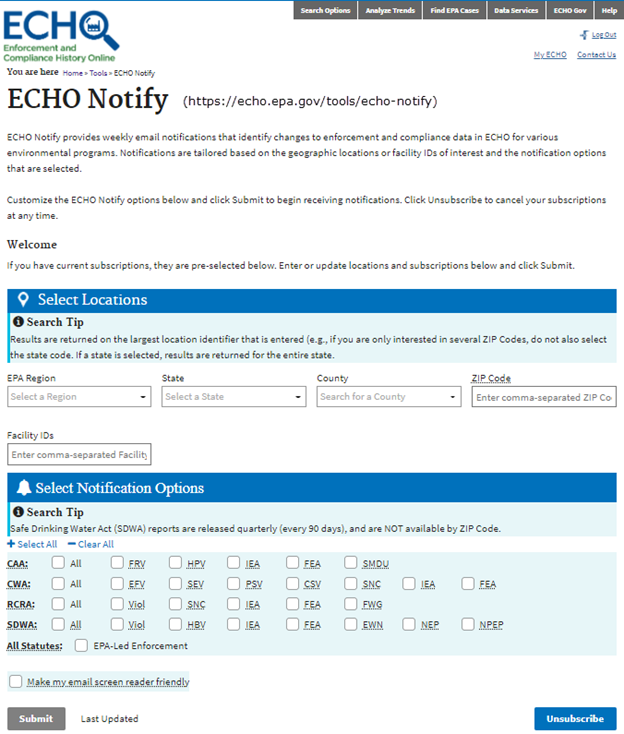U.S. EPA News Release:
EPA settlements with Crescent Point Energy and EP Energy resolve Clean Air Act violations in Utah
Agreements reflect efforts to secure compliance with clean air requirements in Ozone Nonattainment Area
Contact: Richard Mylott, mylott.richard@epa.gov
Salt Lake City (March 30, 2022) – The U.S. Environmental Protection Agency (EPA) today announced settlements with Canadian-based Crescent Point Energy U.S. Corp. (Crescent Point) and Houston, Texas-based EP Energy E & P Company, L.P. (EP Energy) resolving alleged violations of the federal Clean Air Act at oil and gas production facilities in Utah’s Uinta Basin.
The Crescent Point settlement requires the company to pay a civil penalty of $3 million for violations of requirements to control volatile organic compound (VOC) emissions from storage tanks at 30 previously owned oil and gas production facilities. The EP Energy settlement resolves similar violations across 246 production facilities and requires the company to pay a civil penalty of $700,000, take extensive measures to ensure future compliance, and implement a $1.2 million mitigation project to install pollution controls at facilities that are not otherwise subject to control requirements.
Both settlements were filed in the U.S. District Court for the District of Utah yesterday simultaneously with complaints that the two companies’ oil and gas production operations in the Uinta Basin violated requirements to control VOC emissions from storage tanks. The State of Utah is a co-Plaintiff in both actions.
“These settlements reflect our commitment to protecting Utah’s air quality and the health and well-being of communities across the Uinta Basin, an area that does not meet federal clean air standards,” said EPA Regional Administrator KC Becker. “These actions will secure compliance at hundreds of tank facilities, reduce hundreds of tons of ozone-forming pollutants every year, and fund significant clean air projects across the state. EPA will continue to work with the State of Utah and the Ute Indian Tribe to ensure oil and gas production sources are operating within the law to improve air quality and community health.”
VOCs are a key component in the formation of ground-level ozone, a pollutant that irritates the lungs, exacerbates diseases such as asthma, and can increase susceptibility to respiratory illnesses, such as pneumonia and bronchitis. The production facilities covered by this settlement are in the Uinta Basin, an area that does not meet National Ambient Air Quality Standards established under the Clean Air Act for ground-level ozone. The emission reductions achieved through these settlements will directly benefit air quality and residents in rural and tribal communities throughout the Basin.
The $3 million Crescent Point civil penalty will be split evenly between the United States and the State of Utah. Crescent Point has agreed to deposit $1.2 million of the $1.5 million civil penalty owed to Utah into the State’s Environmental Mitigation and Response Fund for air quality-related projects across the state.
The $700,000 EP Energy civil penalty will be split evenly between the United States and the State of Utah. EP Energy has agreed to deposit $280,000 of the $350,000 owed to Utah, with interest, into the State’s Environmental Mitigation and Response Fund for air quality-related projects across the state. EP Energy emerged from bankruptcy on October 1, 2020, and the United States and Utah previously resolved alleged violations subject to a proof of claim in the bankruptcy court for $100,000.
Under the Consent Decree, EP Energy will implement extensive design, operation, and maintenance improvements at 246 oil and gas production facilities. EP Energy will also spend $1.2 million to mitigate past excess emissions by installing pollution controls at 36 uncontrolled facilities. This project will reduce VOC emissions by approximately 370 tons per year as a result of installing emission control devices at uncontrolled facilities. The Consent Decree requires EP Energy to post verifications of facility design, required certifications, and the final mitigation report on its website.
The Stipulations of Settlement and Order and Consent Decrees are available for viewing at: https://www.justice.gov/enrd/consent-decrees
